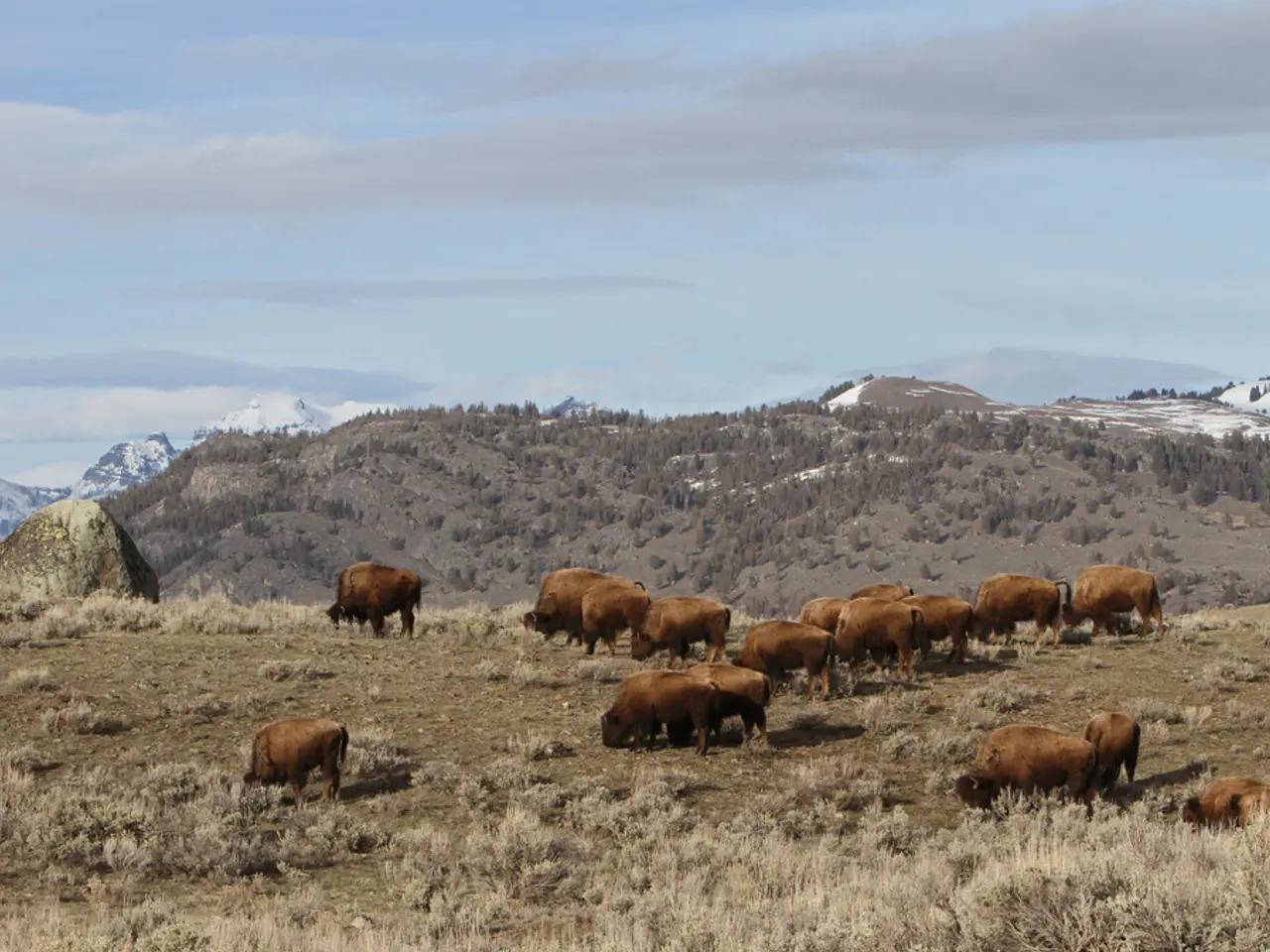"The economic viability of 'Pasture for Life' farming practices proves beneficial"
In a groundbreaking study conducted by UKCEH, Lancaster University, Natural England, SRUC, and funded by BBSRC, ESRC, NE, and the Scottish Government, it has been found that Pasture for Life (PfL) farms outperform traditional farming methods in terms of Gross Margin (GM). The research project, titled 'Sustainable Ecological and Economic Grazing Systems: Learning from Innovative Practitioners' (SEEGSLIP), was led by Dr Lisa Norton.
The study compared the GM of PfL farms with those of Farm Business Survey (FBS) for both suckler beef and breeding sheep flocks. According to Table 1, PfL farms have a higher GM for breeding sheep flocks, with an average of £41/head on upland PfL farms, compared to the average upland farm in the FBS survey at £21/head. Similarly, Table 2 shows that the average GM for PfL suckler beef farms is almost double that of the benchmarked FBS farms, at £1,158/head compared to £516 and £540 for the FBS averages for lowland and upland systems, respectively.
One of the key reasons for these results is the significantly lower variable costs on PfL farms. While the average variable costs for PfL beef finishers are £54/head, they are £309/head for the FBS sample. This is due to the fact that PfL farms sell their calves finished, whereas FBS farms sell six-month-old stores for other farmers to finish.
The July 2021 issue of Direct Driller magazine contains more information on this research. In addition, PfL is now gathering and producing enterprise costings data down to Net Margin level to highlight differences in fixed costs between 100% pasture-fed farmers and conventional lamb and beef producers.
The study also found that despite PfL farms keeping their cattle six months longer or more, the variable costs across all systems were remarkably similar for suckler beef farms. The top PfL farms even make more GM at £106/head than the top Farm Business Survey (FBS) farmers at £93/head for breeding sheep flocks.
While the SEEGSLIP research project did not provide specific details about the economic benefits of feeding no grain to cattle and sheep, it is generally known that such practices can lower feed expenses, promote healthier animals via natural foraging, and enhance product market value (e.g., grass-fed premiums). Environmentally, it tends to support soil health and biodiversity.
For more detailed findings on the economic benefits of feeding no grain to cattle and sheep from the SEEGSLIP research project, official reports or summaries from authoritative agricultural research bodies may be consulted.
- In the comparison conducted between Pasture for Life (PfL) farms and Farm Business Survey (FBS) farms, it was observed that PfL farms have higher Gross Margins (GM) for both breeding sheep flocks and suckler beef farms, which can be significantly attributed to lower variable costs.
- The research project 'Sustainable Ecological and Economic Grazing Systems: Learning from Innovative Practitioners' (SEEGSLIP) highlights the potential for economic gains in the finance and business sectors through the practice of feeding no grain to cattle and sheep, resulting in lower feed expenses, healthier animals, and enhanced product market value.




